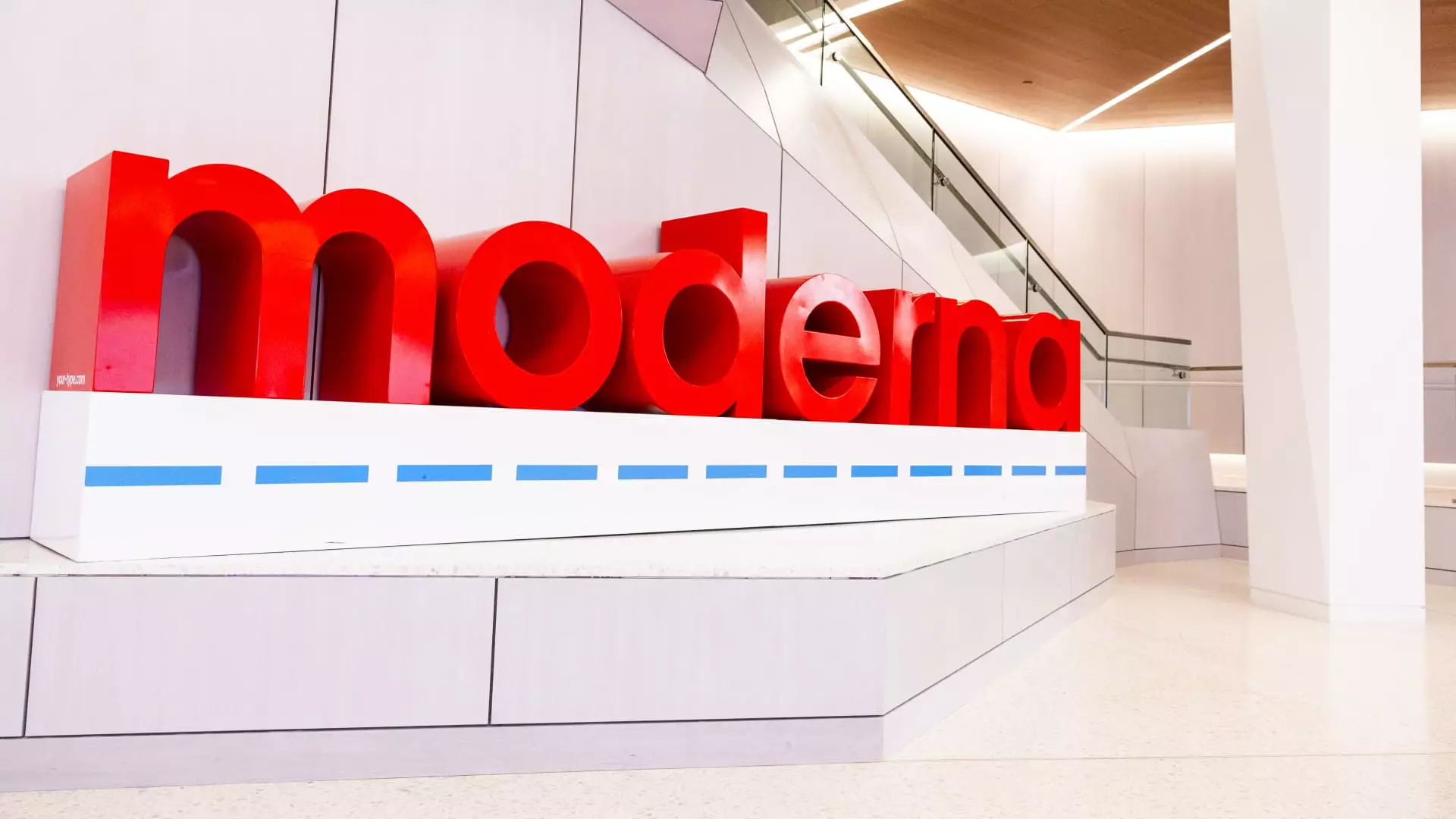As the dust settles from the COVID-19 pandemic, biotech giant Moderna finds itself grappling with substantial challenges. The company recently reported its fourth-quarter earnings, revealing results that illustrate both the decline of its once-lucrative COVID vaccine business and the significant costs associated with restructuring efforts. Despite better-than-expected revenue, the steep net loss signals an urgent need for strategic reevaluation as the company seeks to carve a future beyond vaccines.
During the fourth quarter of 2024, Moderna experienced a net loss of $1.12 billion, amounting to $2.91 per share. This marks a stark contrast to the net income of $217 million or 55 cents per share logged during the same time the previous year. While the revenue of $966 million exceeded the analysts’ expectations of $942.8 million, it remains a shadow of its former self. For context, the company had reported impressive COVID vaccine sales of $2.8 billion in the previous year, and the current figure reflects a notable decrease, largely fueled by waning demand and strategic shifts in product distribution.
Notably, the income breakdown shows that nearly 96% of fourth-quarter revenue stemmed from the COVID vaccine, which grossed $923 million—an alarming 66% drop compared to the prior year. This decline signals not only the saturation of the market but also the impending realities of increased competition and diminishing public interest as vaccination rates plateau.
In light of financial setbacks, Moderna implemented rigorous cost-cutting measures, achieving a 27% reduction in expenses compared to 2023. Chief Financial Officer Jamey Mock emphasized that the company intends to cut costs by an additional $1 billion by the end of 2025, which is crucial for maintaining profitability amid declining revenues. The recent loss did include an extraordinary $238 million noncash charge linked to ending a contract manufacturing agreement, underscoring the tough decisions being made to pivot the company’s focus.
Despite these efforts, analysts remain cautious. Moderna’s stock price fell over 4% in premarket trading following the earnings report, and the company’s shares have plummeted by more than 20% since the beginning of the year. The downward trajectory highlights investors’ anxieties surrounding the future viability of Moderna’s revenue streams, especially in light of already trimmed guidance for product sales in 2025.
In the face of adversity, Moderna is pinning its hopes on an ambitious pipeline built around its messenger RNA technology. The company has submitted three new products for regulatory approval, including an advanced iteration of its COVID vaccine and a combination vaccine targeting both COVID and influenza. Additionally, the recently launched RSV vaccine, approved for seniors in multiple countries, adds to Moderna’s growing portfolio.
The success of these new products is critical as they aim to offset the declining revenues from COVID vaccinations. Nevertheless, market analysts remain skeptical, citing increased competition in the vaccine space and ongoing uncertainty concerning public health recommendations. These “potential headwinds,” as Mock described, could impede Moderna’s path back to profitability, thereby further straining its financial outlook.
Moderna is at a critical juncture; the market dynamics that propelled the company to the forefront of biotech innovation during the pandemic have dramatically shifted. As the company confronts a new landscape characterized by reduced demand for its flagship COVID vaccine, the stakes have never been higher. Investors and stakeholders alike are closely monitoring Moderna’s strategy for recalibrating its business model to ensure diversification and resilience.
The road ahead will be fraught with challenges, but with its pioneering mRNA platform as a foundation, Moderna has the potential to innovate and redefine its market position. Whether it can successfully transition from a one-product wonder into a multifaceted biotech leader remains to be seen—the coming months will be pivotal in determining the company’s trajectory in this new post-pandemic reality.

